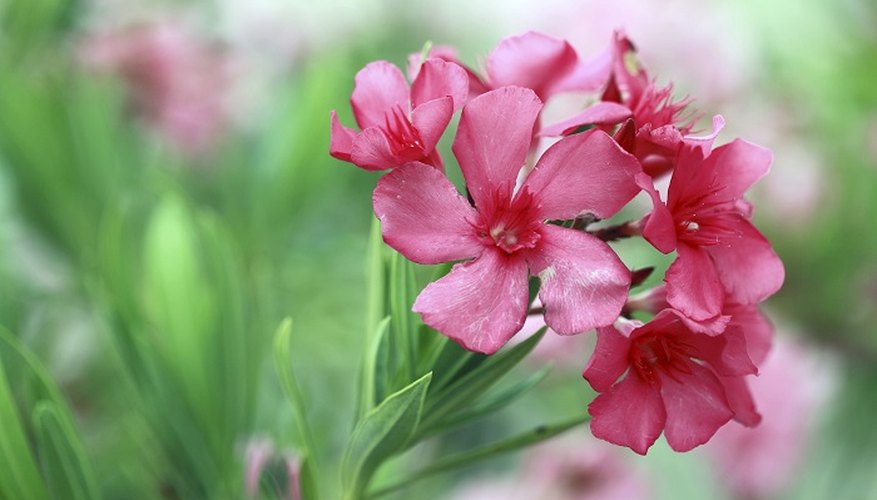Oleander is grown as an ornamental garden plant, either in the ground or in containers. It will generally survive temperatures as low -9 degrees C (15F) but, at these temperatures, the foliage will suffer some damage. In the autumn, before temperatures dip below freezing, prepare your oleander for the winter. In the spring when new growth appears, resume your regular care regime, such as your normal watering and fertilising schedules.
- Oleander is grown as an ornamental garden plant, either in the ground or in containers.
- In the spring when new growth appears, resume your regular care regime, such as your normal watering and fertilising schedules.
Bring outdoor container plants to a warmer area, such as an unheated enclosed porch or indoors. As long as the temperatures are above freezing, your oleander, foliage and all, should fare well over the winter.
Water potted oleanders sparingly during the winter. In warmer, well-lit areas, oleanders need more water than ones placed in cooler, dimly lit areas. Water only when the soil dries out several centimetres deep, which you can test with your finger. Then, water only a little bit to slightly moisten the soil.
Cover around the base and under the canopy of outdoor oleander plants with 5 to 10 cm (2 to 4 inches) of mulch, such as chopped leaves or straw. Mulch helps insulate the roots so that even if the tops die back during the winter, your oleander should grow back in the spring.
